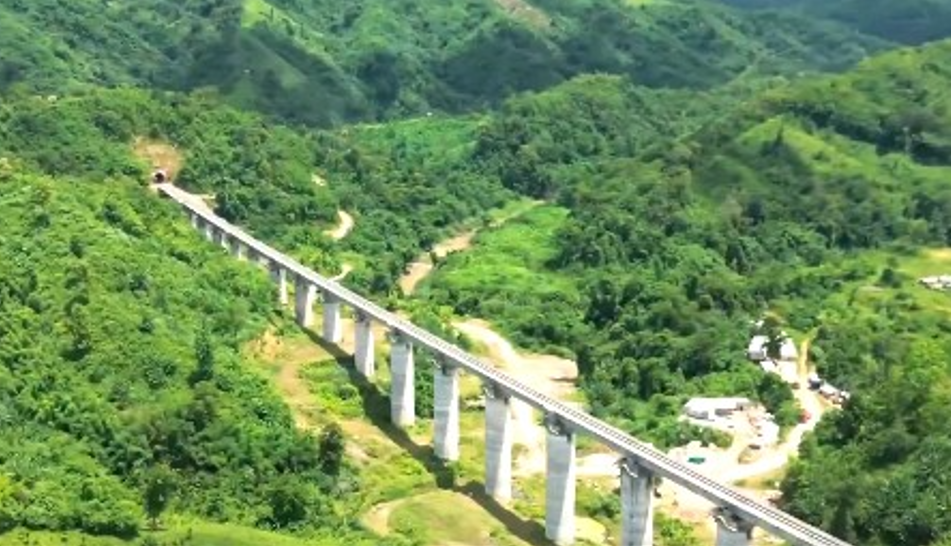Over the past decade, the Northeastern Region has shifted firmly from being a remote frontier to becoming an emerging leader in India’s growth story. Prime Minister Narendra Modi mentioned, “For us, EAST is not just a direction but a vision: Empower, Act, Strengthen, and Transform,” a mantra that now drives the Act East framework. That vision is being translated into concrete action: massive investment and policy focus under the governments of India and its ministries are transforming infrastructure in the region. The Ministry of Railways, the Ministry of Road Transport & Highways, and the Ministry of Development of North Eastern Region (MDoNER) are all deeply involved in executing schemes like Pradhan Mantri Gram Sadak Yojana (PMGSY), Prime Minister’s Development Initiative for North East Region (PM-DevINE), and North East Special Infrastructure Development Scheme (NESIDS). With their combined efforts, road, rail, and rural connectivity networks are being upgraded at scale. What was once considered distant is now being knit into the national grid with speed and ambition.
Rail connectivity has been at the core of this transformation. Since 2014, the Ministry of Railways has allocated a cumulative ₹62,477 crore to the Northeast, with ₹10,440 crore set aside in the current fiscal year. Projects worth ₹77,000 crore are underway. A landmark achievement is the Bairabi–Sairang railway line in Mizoram, built at a cost exceeding ₹8,000 crore; this 51-kilometer line will connect Aizawl to India’s national railway network for the first time. In addition, the region has overcome extreme terrain through the construction of 143 bridges and 45 tunnels, underscoring engineering ambition alongside connectivity.
Road infrastructure, critical for rural access and economic linkages, is seeing parallel attention. Under PMGSY, 17,637 road works covering 89,436 km and 2,398 bridges have been sanctioned for the Northeast. Of these projects, 16,469 road works spanning 80,933 km and 2,108 bridges have already been completed, improving access for remote areas and reducing travel times for goods and people. Simultaneously, over 16,207 km of National Highways have been constructed as of July 2025, linking state capitals, border areas, and regional markets more effectively to the rest of the country.
Schemes like NESIDS (Roads) and NESIDS-OTRI (other than roads infrastructure) are helping fill gaps in sectors beyond just transport, covering health, education, power, water, telecommunications, and solid/liquid waste management. As of 31 July 2025, 29 projects under NESIDS-OTRI have been sanctioned and are being implemented, with ₹462.21 crore already expended. These efforts ensure that infrastructure isn’t just about movement but also about services and quality of life.
The central scheme PM-DevINE has also been key. Fully funded by the Centre since its announcement in the 2022-23 budget, PM-Dev INE is designed to drive multi-sectoral infrastructure development tailored to the Northeast’s specific needs. Projects under PM-DevINE are making significant contributions to connectivity improvements, urban and rural asset development, and socioeconomic inclusion.
An important supporting innovation is the Poor Vottar Vikas Setu (PVS) Portal, which is helping streamline planning, approvals, fund disbursement, and monitoring of infrastructure projects in the Northeast. The portal enables state governments and central agencies to submit proposals digitally, track completion and utilization certificates, and maintain transparency. The approach improves governance, minimizes delays, and better aligns projects with local needs.
Connectivity is also being strengthened in digital infrastructure and civic amenities, complementing roads and rail. According to MDoNER, 6,355 Gram Panchayats in the Northeast have been made service-ready under the Bharat Net project. Alongside that, 3,297 mobile towers under various government-funded mobile projects have been commissioned in the region, improving access for remote and rural villages. These advances are unlocking possibilities for e-governance, online education, digital commerce, and healthcare, shrinking the distance between remote clusters and basic modern services.
Moreover, schemes like PM-DevINE and NESIDS are not just about hard infrastructure but also about enhancing the quality of life through inclusive development. Under these schemes, projects covering health centers, schools, water supply, and ancillary services are being sanctioned and funded. These developments aim to ensure that growth is equitable, not just in highways and stations, but also in clean drinking water, public health, and education, so that the benefits of development permeate all layers of society in the Northeast.










